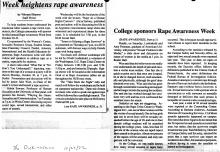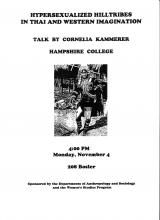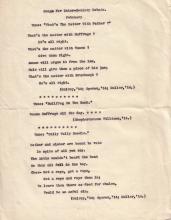Belles Lettres and UPS Debate Women's Suffrage, 1914
In their 23rd Annual Inter-Society Debate, Belles Lettres and the Union Philosophical Society held a debate surrounding the question of women's suffrage. The debate prompt read, "Resolved, that the progress and prosperity of the United States of America would be increased if the elective franchise were not withheld from any one solely on account of sex." Because no women were allowed in either literary society, the question was debated and judged by male Dickinsonians.
Persis Longsdorff Describes the Beginnings of Coeducation
In a letter to Dickinson College Historian Charles Coleman Sellers, Persis Longsdorff Sipple described the beginnings of coeducation. According to Persis, her father went to President McCauley and told him that he had "four daughters, who soon be ready to enter college somewhere. He finally prevailed upon him to make the decision to allow girls to be included in the student body." Thus, Persis and her sister Zatae entered the College in 1884.
Inter-Society Debate: Sexism
The Inter-Society Debate took place on March 9, 1922 between the Harman Society (a female society created in 1896) and the McIntyre Society (also for women, founded in 1921- It appears to have only been active in 1921) at Bosler Hall. It discussed the enactment of a constitutional amendment for the protection of women against political, legal or civil discrimination due to their sex. Margaret Eslinger (this document came from her personal scrapbook of her Dickinson years) assisted Kathryn Smith '24 on the negative side of the argument.
"I was a Co-ed": The First Space for Female Students on Campus
In her memoir recounting her time at Dickinson, Elizabeth Low remembers the first space soley for female students at Dickinson College. According to Low, the room was on the first floor of Bosler, next to the chapel. According to Low, the room was created after Dr. Reed became the President of the College.
The Hair of James Fenimore Cooper's Heroines
Miriam Riley Weimer (Class of 1940) describes student-faculty relations in an interview. She remembers that Professor Mulford Stough, who she paints as "a character, but a nice guy," dropped a note in Miriam's lap during an exam in Bosler Hall. As Miriam recalls, the note read, "With the sun coming in on your hair, it's just the color that I'm sure the hair of all James Fenimore Cooper's heroines had." At the end of the note, the professor asked if Miriam played bridge. According to Miriam, Professor Stough and Dr.








